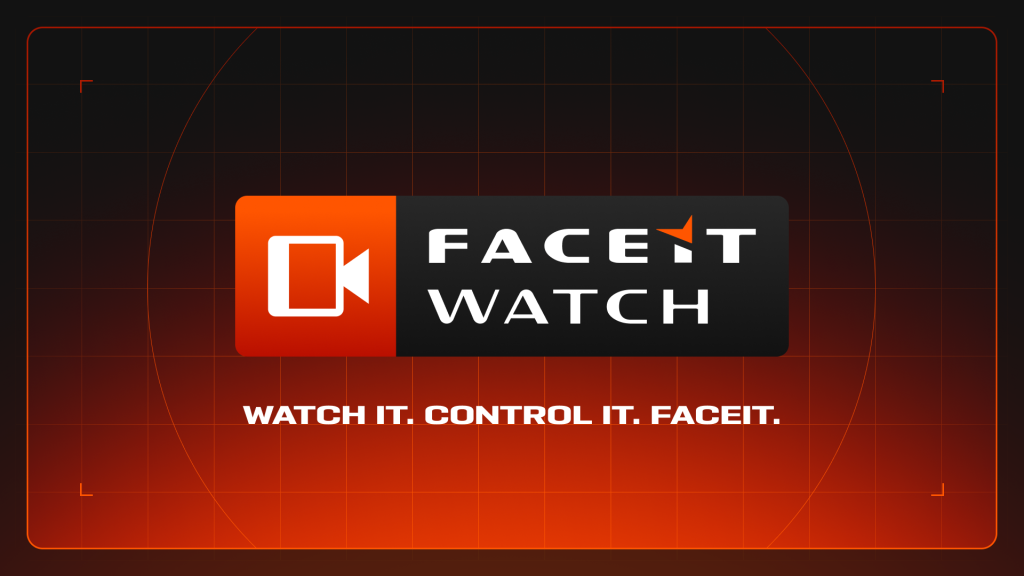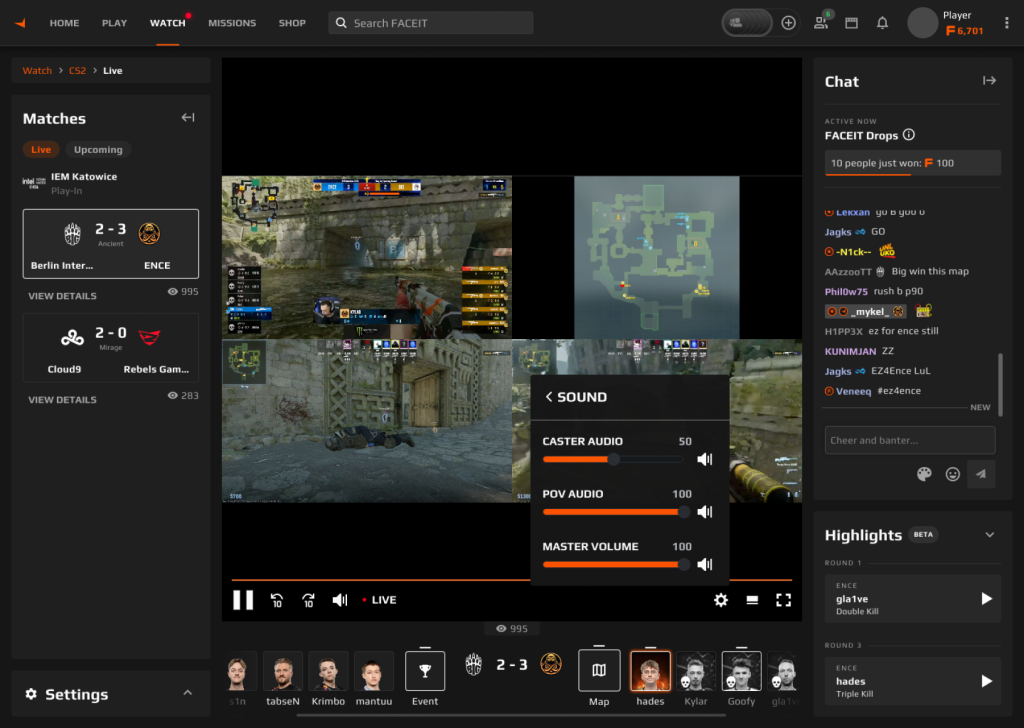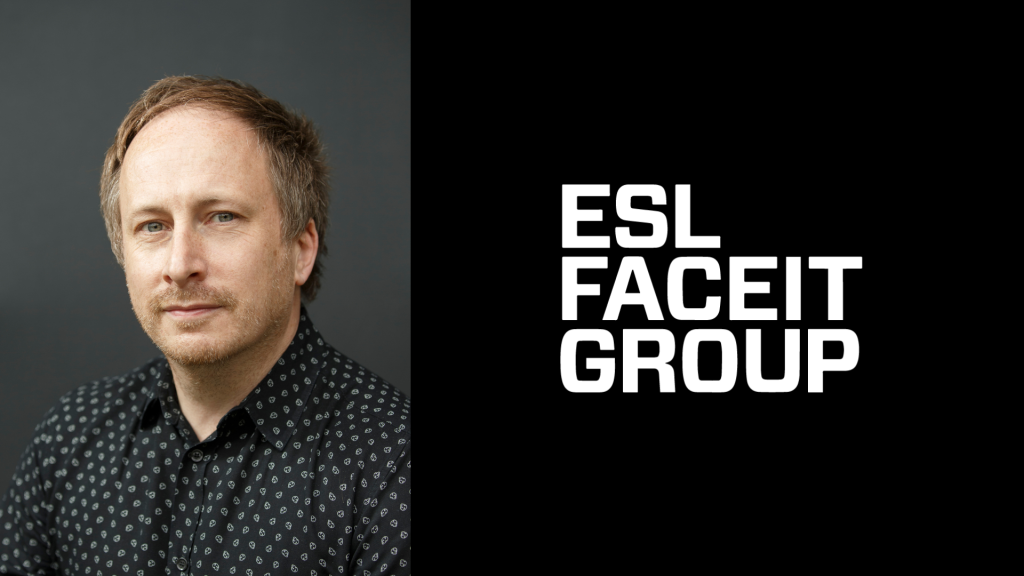
A new viewing platform debuted at Counter-Strike’s prestigious IEM Katowice 2024. It’s called FACEIT Watch and it was “built for esport enthusiasts”, as Warren Leigh, SVP of product and digital platform at FACEIT, put it in an interview with Esports Insider.
Unlike traditional broadcasts where a producer decides which perspective is shown at any given moment during a competition, FACEIT Watch allows users to choose the point of view from which to follow the event between those of all participating athletes.
“FACEIT Watch is the product of a reasoning we made in relation to the rise of co-streams,” Michal ‘Carmac’ Blicharz, VP of product development at ESL FACEIT Group, told Esports Insider. Co-streams, where an influencer broadcasts an esports event on their own channel, “weaken our signal because there is no longer a direct relationship between us and the public but a situation is created whereby there is an intermediary between us and the spectators.”
Carmac said there’s been a recent trend in the industry of focusing on keeping casual viewers happy. “With Watch we have done the opposite,” he claimed, believing that there is an audience of very demanding gamers who are looking for a very customisable experience. “This has never been done until now; esports fans are very nerdy so we think they might like something like this.”
But EFG is not the first one to experiment with a proprietary streaming platform. BLAST.tv (BLAST’s own tailored viewing platform that launched in 2022) was also built as a way of catering to hardcore fans. Riot Games was also reportedly building its own streaming platform but cancelled the project due to its recent layoffs. The ability to choose perspectives and different angles, however, is a new and unique innovation that sets FACEIT Watch apart from the rest.
The proving ground for this platform was IEM Katowice 2024, the first major event organised by EFG with FACEIT Watch in mind. “Over 100,000 viewers used the platform to watch the event’s play-ins stage alone,” Leigh claimed. “In total 1.5m Watch hours were recorded over the tournament with the Grand Final resulting in the highest number of users tuning in.”

The multi-perspective view selector, according to the data, was the standout feature because it allows viewers to switch between their preferred players’ perspective and the main event stream. “This feature shone particularly during the final between Team Spirit and FaZe Clan, where it was used by many to spotlight the epic performance of Donk, a young prodigy from Team Spirit”.
This feature also enables the fans to pause and rewind, with access to killcams and live-generated replays of key moments and adjust the volume of caster and multi-perspective sounds, as well as disable spoilers.
The debut was a success and expansion plans are already underway: “FACEIT Watch is currently supporting Counter-Strike and Apex Legends”, said Leigh. “First-person shooters are consistently the most-watched genre amongst livestreams, generating 4.7 billion hours watched in 2023, and they are the FACEIT community’s bread and butter so it made sense for us to start here. In the future, we want to have FACEIT Watch available for many more games.”
The next big, obvious candidate for the platform is Overwatch, given its esports competitions are now organised by ESL FACEIT Group after the closure of the Overwatch League.
Monetisation wise, there’s room for innovation inside a well-known business model. Watch is supported by advertising but the technical advancements allow EFG to offer its clients more specific targeting of users.
“Our approach to monetisation focuses on enhancing the user experience while also providing opportunities for brands and sponsors to engage specifically with the core esports community. We currently have no plans for FACEIT Watch to replace the official broadcast or change to a subscriber/pay-per-view format,” Leigh claimed, mirroring the strategy adopted by BLAST for BLAST.tv.
“For the foreseeable future, our monetisation strategy for FACEIT Watch is focused on non-intrusive ads and collaborations with brand partners who align with the interests and preferences of our users.”

However, there is also potential for pattern recognition in user behaviour, which opens up a lot of possibilities. If the data is shared with the esports organisations, for example, one team could put a premium sponsor on its most coveted player since many fans may end up watching an event entirely through their eyes and facecam.
“One of the best things about FACEIT Watch is how it is very tailored to the user, which means advertisers can target gamers in specific segmentations which offer more value for their campaigns, with the potential for exclusive drops or video and display advertising.” There could be rewards for watching a highlighted player and even more interactions between the fans and the competition to make the experience of watching a live event from home more rewarding.
According to Stream Hatchet, 2.5bn hours of esports events were watched in 2023, with esports viewership up 9% year-over-year. It follows that there’s an increasing appetite for a more targeted, richer viewing experience.
That’s what FACEIT Watch aims to provide, with the help of technical partner Znipe Esports — and there seems to be an interest in it. It remains to be seen how the product will evolve from here, and whether FACEIT Watch will become a breeding ground to test new ways of doing business with esports broadcasting.
